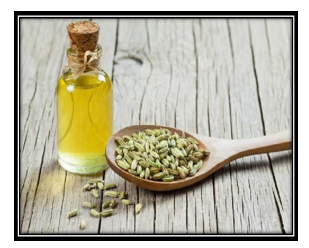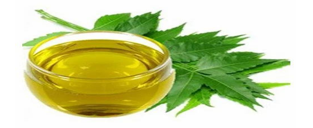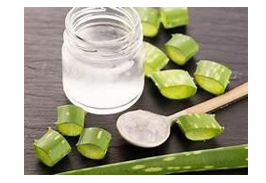Ijraset Journal For Research in Applied Science and Engineering Technology
- Home / Ijraset
- On This Page
- Abstract
- Introduction
- Conclusion
- References
- Copyright
“Formulation and Evaluation of Herbal Cream for Treatment of Acne Vulgaris”
Authors: Swamini N. Wagh, Santosh A. Waghmare, Sonal A. Phule
DOI Link: https://doi.org/10.22214/ijraset.2024.58002
Certificate: View Certificate
Abstract
Herbal cream is preparations use by human beings in treatment of various skin infections. Propionibacterium acne and Staphylococcus Epidermis have been recognized as pus-forming bacteria triggering an inflammation in acne. The present research work deals with the formulation and evaluation of herbal cream against this etiologic agent of acne vulgaris. The present formulation of Fennel (Foeniculum Vulgare), Neem (Azadirachta indica), Turmeric (Curcuma longa), Aloe vera, Bees wax, Liquid Paraffin, Borax Methylparaben, Rose water. The Herbal Cream is formulated by aqueous phase. The prepared Cream was evaluated for pH, Spread ability and stability. The Cream evaluated for colour foreign particle etc. by which the present of active constituent fennel was found to be White Colour and turmeric was found to be yellow colour. The spread ability was found to be easily spreadable on a skin surface area after application and passes all the parameters. Cream is O/W type of emulsion.
Introduction
I. INTRODUCTION
The word Cosmetic derived from a Greek word ‘Kosmesticos’ that means to form the time any materials used to beautification or promoting appearance is known as cosmetic. Cream is classified as oil in water and water in oil emulsion. It is applied on outer part or superficial part of skin and its main ability is to remain for longer duration of time at the site of the application.
Acne Vulgaris is a majorly issue especially in teenagers and Adolescence according to global statistic, approximately 90% of population suffer this skin issue at age around 11-25 years, nearly 8% adult at a age 23-34 years old and only 3% of adults having acne Vulgaris at a age 35-45 years old. Pimple, acne, Sunburn, Mark and Pigmentation are issues that affected every individual at least ones during their life time. Acne infection affects about 85% of teenagers and may continue to adulthood.
There are about two million of visits to physicians per year from teenagers and 0.2 million visits are by patients aged over 35 years. The direct cost of acne treatment in the US exceeds $1 billion per year. Furthermore, these patients spend more than $100 million on non-prescription acne products. Psychological, social, and emotional impairment that result from acne have been estimated to be equal and in some instances higher than that of diabetes, arthritis, epilepsy and asthma. Acne vulgaris may cause scarring, leading to lifelong problems regarding self-esteem. These patients are move towards depression and are more likely to be unemployed .
It has been estimated that acne affects 650 million people globally and is the eighth most common diseases in the world. Most people believe that acne vulgaris tends to disappear and diminishes or decreases over time by age. However, there is no method to estimate how long it would take to start to decrease or disappear completely. The acne treatment master plan depends on its severity. For patients with large distributed acne both topical and oral therapies are usually prescribed. Then, after six to eight weeks, the efficacy, compliance and the adverse effects are studied and again the regimen is adjusted, accordingly. A wide variety of treatment regimens exist for acne vulgaris including benzoyl peroxide, retinoids, isoprenoids, keratolytic soaps, alpha hydroxy acids, azelaic acid, salicylic acid as well as hormonal, anti-androgen or anti-seborrheic treatments . The direct injection of steroids into inflamed cysts, microdermabrasion, chemical peels, radiofrequencies, light or lasers have been shown to result in the relief of acne, however, none of these regimens is free of side effects. So the use of the herbal plants for the treatment is being use to reduce the all side effects and make the safe product for all the type of the skin types. Further, more investigations are needed to clarify the exact role of these methods in therapy .Using alternative and complementary medicine, including medicinal plants, is also common within patients affected by acne and infectious skin diseases. The different types of the plants show the effect for the cure or the treatment of the acne and pimples. The plants which have the strong effect in the treatment of the acne are fennel, neem, turmeric, and the aloe vera. Fennel (Foeniculum vulgare) is the herb with the yellow flowers. The dried seeds and oil is used for the anti-inflammatory treatment and the turmeric also show the anti-inflammatory and the anti-infective property. The dried leaves of the neem are used in the acne treatment. The gel of the aloe vera leaves is for the glowing of the skin and making the soft texture of the cream.
II. OBJECTIVE
- Other formulations like creams, Jelly are widely available in the market for inflammation management but in Some Cases we cannot Use this formulation like in case of dry skin.
- So in Case of dry Skin ointment formulation is better option. Fennel plant (Foeniculum vulgare) is act as anti-inflammatory.
- So the main goal is to make a good anti-inflammatory ointment by using fennel, turmeric, neem, aloe vera.
III. NEED OF THE WORK
- Suitable for all skin types.
- An individual with the skin of any types can use them and never have to worry about degrading skin condition.
- No Side effects.
- A product made from botanicals, or plants, that are use to treat diseases or to maintain health are called herbal product.
- The natural content in botanicals does not cause any side effects on the human body; instead, enriches the body with nutrients and other useful minerals .
IV. SCOPE
- These are evolved with little understanding or absorption mechanism but now ointment have gained more and more importance because the ointment formulation have better penetration than creams.
- Fennel plant has been widely reported to produce anti-inflammatory activity hence topical Administration is necessary if high concentration with fewer side effect.
- Hence a study on formulation and evaluation of Boswelic acid ointment was as a principal objective for anti-inflammatory activity.
V. PLANTS USED AS ANTI-ACNE
A. Fennel
Fennel plant (Foeniculum vulgare), of the parsley family, having feathery leaves and umbel of small, yellow flowers. Originated in the southern Mediterranean region. Romans grew it for its aromatic seeds. Edible fleshy shoots are still a very common vegetable in southern Italy. Grown wild throughout the Northern, Eastern, and western hemispheres, specifically in Asia, North America and Europe. Fennel plants approximately production in India 11 Acne by definition is multifactorial chronic inflammatory disease of pilosebaceous units.
Propionibacterium acnes and staphylococcus epidermidis are considered as the major skin bacteria that cause the formation of acne. Although acne does not pose serious threat to general health, it is one of the most socially distressing conditions especially for adolescents. The plants have been reported in the literature having good anti-microbial, anti-oxidant and anti-inflammatory activity. The infection of acne vulgaris exhibits wide distribution and its Prevalence increase over time.

B. Neem
In a study, conducted on an anti-acne formulation prepared from herbal extracts, it was revealed that ethanol extract of Azadirachta indica, G. glabra, Andrographis paniculata, Ocimum sanctum, and green tea possessed the potential for inhibiting acne. In this study the anti-acne formula successfully acted against Propionibacterium and Staphylococcus epidermis. Aqueous extract of Azadirachta indica leaves also possess chemo preventive potential against murine skin carcinogenesis. Skin tumors have been shown to enhance the expression of proliferating cell nuclear antigen in comparison to the control group. In this study, skin tumors exhibited high level of lipid peroxidation.

C. Turmeric
Turmeric (Curcuma longa) from the family of the zingiberaceae. A contributing cause of acne is bacteria known as Propionibacterium acnes, the most abundant bacteria on human skin.
Often, to treat severe acne, antibiotics such as erythromycin and clindamycin — in combination with azelaic acid — are prescribed. However, as drug resistance grows, researchers continually test new antimicrobial agents.
One possibility that’s been a focus of research is curcumin. A indicates that curcumin has antibacterial activity against a number of bacteria — including P. acnes — when combined with lauric acid.
Several preliminary studies confirm that the curcumin in turmeric may decrease inflammation humans, and, “research suggests that curcumin can help in the management of oxidative and inflammatory conditions.”Although there’s some indication that turmeric’s anti-inflammatory properties might also be effective on acne, there haven’t been any large clinical trials on its ability to help improve or cure acne.

D. Aloe vera
Aloe vera is known for its antibacterial and anti-inflammatory properties. It’s an ancient, antioxidant-rich plant that has been used throughout history for its healing properties. Aloe vera for acne is an effective, natural way to treat and prevent acne breakouts and has some potential to reduce the appearance of acne scars.
This gel is safe for all skin types. The gel can be taken directly from the plant or found easily within a variety of commercial skin care products. Aloe vera also contains salicylic acid and sulfur, two antiseptic agents that are commonly found in acne medications to clear pores and reduce the amount of oil on the skin.
Oil, dead skin cells and debris can clog pores and cause acne breakouts. Lastly, this gel helps restore skin’s health by speeding up wound healing and retaining moisture within the skin. Another study looked at aloe resin, a component of aloe vera gel and determined that it can reduce the appearance of scar tissue by lightening hyperpigmentation.
This gel also boosts collagen and elastin production; a strong collagen matrix beneath the skin encourages proper healing.

VI. PROCEDURE
Heat liquid paraffin and bees wax in a borosilicate glass beaker at 75°C and maintain that heating temperature (Oil phase).In another beaker, dissolve borax, methylparaben in distilled water and heat this beaker to 75°C to dissolve borax and methylparaben and to get a clear solution (aqueous phase).Then slowly add this aqueous phase to heated oily phase. Then add measured amount of fennel extracts, neem extracts, turmeric extracts, aloe vera extracts and stir vigorously until it forms a smooth cream. Then add few drops of rose water as a fragrance. Put this cream on the slab now add few drops of distilled water if necessary and the mix the creams till it get the smooth texture and mix all the ingredients properly. This method is called as slab technique or extemporaneous method of preparations of cream.
VII. FORMULATION
|
Sr. No. |
Ingredients |
Formulation |
|||
|
F1 |
F2 |
F3 |
F4 |
||
|
1. |
Fennel Extract |
2 ml |
3 ml |
4 ml |
5 ml |
|
2. |
Neem Extract |
0.5 ml |
0.6 ml |
0.7 ml |
0.8 ml |
|
3. |
Turmeric Extract |
1 ml |
2 ml |
3 ml |
4 ml |
|
4. |
Aloe vera Extract |
1.5 ml |
1.6 ml |
1.7 ml |
1.8 ml |
|
5. |
Liquid paraffin |
10 ml |
15 ml |
13 ml |
15 ml |
|
6. |
Bees wax |
4 gm |
5.5 gm |
5 gm |
4 gm |
|
7. |
Borax |
0.2 gm |
0.4 gm |
0.3 gm |
0.5 gm |
|
8. |
Methyl paraben |
0.02 gm |
0.04 gm |
0.03 gm |
0.05 gm |
|
9. |
Rose water |
Q.S |
Q.S |
Q.S |
Q.S |
|
10. |
Distilled water |
Q.S |
Q.S |
Q.S |
Q.S |
VIII. CHARACTERIZATION
A. The Type of the Emulsion
A Congo red dye was mixed with the cream. A drop of the cream was placed on microscopic slide and examined under a microscopic slide and examined under the microscope. If the disperse globules appears red and the continuous phase colourless, the cream is oil in water (o/w) type, the reverse condition occurs in water in oil (w/o) type cream.
B. Organoleptic Emulsion
Anti-acne cream was observed for colour; odour and texture.
C. Determination of pH
The pH of formulation was determined using digital pH meter. (Model EQ-610) One gram of cream was dissolved in 100 ml of demineralised water and stored for 2 hours. The measurement of pH of each formulation was done in triplicate. Instrument was calibrated before use with standard buffer solution at pH 4, 7 and 9.
D. Determination of Viscosity
100 gram of each formulation was weighed and transferred to a beaker. By using Brookfield viscometer (LV DV-lll Ultra), spindle No. 3 at 10 rpm for 5 min. Before measurement declaration of cream was done and the cream was filled in appropriate viscosity of formulation’s were determined with the wide mouth container. Samples of the cream were allowed to settle over 30 min at the assay temperature (25 ± 1°C) before the measurements. Viscosity of formulation was determined using the formula.
Viscosity (cps) = dial Reading ×Factor.
E. Spread Ability
The spread ability was expressed in terms of times in seconds taken by two slides to slip off from the cream, placed in between the slides, under certain load, lesser the time taken for separation of the two slides better the spread ability. Two sets of glass slides of standard dimension were taken. Then one slide of suitable dimension was taken and the cream formulation was placed on that slide. Then other slide was placed on the top of the formulation. Then a weight or certain load was placed on the upper slide so that the cream between the two slides was pressed uniformly to form a thin layer. Then the weight was removed andexcess of formulation adhering to the slides was scrapped off. The upper slide was allowed to slip off freely by the force of weight tied to it. The time taken by the upper slide to slip off was noted.
Spread ability = m×1/t
F. Stability Test
The stability study was carried out by storing the anti-acne cream at three different temperatures whichare 10°C, 27°C and 40°C for three months.
IX. RESULT
A. Determination of Type of Emulsion
Formulation are confirmed by dye test. If the disperse globules appear red the continuous phase colourless, the cream is oil in water (O/W) type of emulsion cream.
B. Organoleptic Evaluation
Colour, Odour, texture was conformed in laboratory scale.
|
Formulation |
Colour |
Odour |
Texture |
|
F1 |
White |
Aromatic, pleasant |
Smooth |
|
F2 |
White |
Aromatic, pleasant |
Smooth |
|
F3 |
White |
Aromatic, pleasant |
Smooth |
|
F4 |
White |
Aromatic, pleasant |
Smooth |
C. Determination of Ph
pH of all the four formulation F1, F2, F3, F4, was found to be closer to skin pH, including that they can be safely used on skin pH of all four formulation. F1, F2, F4 are the suitable formulations for the skin, as skin pH is 4.8 to 6.
|
Formulation |
pH |
|
F1 |
4.8 |
|
F2 |
5.5 |
|
F3 |
6.2 |
|
F4 |
5.7 |
D. Determination of Viscosity
The viscosity of cream should be measured with the help of Brookfield viscometer.
|
Formulation |
Viscosity (Cps) |
|
F1 |
21020 |
|
F2 |
11810 |
|
F3 |
13426 |
|
F4 |
18821 |
F1, F2, F3 and F4 reading was recorded successfully.
F. Spread Ability
The spread ability of the four formulations, F1, F2, F3, and F4, was tested.
|
Formulation |
Spread ability |
|
F1 |
32.4 |
|
F2 |
32.3 |
|
F3 |
25.3 |
|
F4 |
15.2 |
It was discovered that for F2, the time taken by the three slides to separate is less, and as stated in the assessment time taken for separation of the three slides is better, therefore F2 exhibited greater spread ability.
- Stability Test
There are no significant changes are observed under different temperature in stability study for 3 months for cream formulation.
2. Stability Study at 10°C
|
Parameter |
0 day |
15 day |
30 day |
90 day |
|
pH |
4.6 |
4.6 |
4.6 |
4.6 |
|
Viscosity |
12485 Cps |
13745 Cps |
16975 Cps |
19765 Cps |
|
Colour |
White |
White |
White |
White |
|
Phase separation |
No |
No |
No |
No |
|
Consistency |
No change |
No change |
No change |
No change |
3. Stability Study at 27°C
|
Parameter |
0 day |
15 day |
30 day |
90 day |
|
pH |
4.5 |
4.5 |
4.5 |
4.5 |
|
Viscosity |
10865 Cps |
12577 Cps |
14656 Cps |
15286 Cps |
|
Colour |
White |
White |
White |
White |
|
Phase separation |
No |
No |
No |
No |
|
Consistency |
No change |
No change |
No change |
No change |
4. Stability Study at 40?C
|
Parameter |
0 day |
15 day |
30 day |
90 day |
|
pH |
4.5 |
4.5 |
4.5 |
4.5 |
|
Viscosity |
9865 Cps |
11359 Cps |
12921 Cps |
14619 Cps |
|
Colour |
White |
White |
White |
White |
|
Phase separation |
No |
No |
No |
No |
|
Consistency |
No change |
No change |
No change |
No change |
Conclusion
Acne is an extremely common skin disorder that affects virtually all individuals at least once during life. Three formulation were prepared and were optimized study F1 formulation is better than F2and F3. This could be an effective formulation made from fennel and has cosmetic benefits like Anti-Inflammatory, Anti-Oxidants and are more acceptable in the belief that they are safer with fewer side effects than the synthetic ones, so herbal anti-acne cream which is non-toxic, safe and effective was formulated.
References
[1] Shah R.N, Mithal B.M, A Hand book of Cosmetic’s, Birla institute of Technology and Science, PILANI, India: M K Jain for VALLABH PEAKASHAN:First edition 2000;1. [2] N. N. Navindgikar, K. A. Kamalapurkar, P.S. Chavan A Research paper on Formulation and Evaluationof Multipurpose Herbal Cream, International Journal of Current Pharmaceutical Research: Volume 12:2020; 25-30 [ Accepted 23 March 2020]. [3] Mahendra Sekar, Fouzia Hanim Abdul Halim, ANNUAL RESEARCH & REVIEW IN BIOLOGY, Anti-acne cream, Original research article:2017 [Accepted 19 September 2017]. [4] Lynn DD, Umari T, Dunnick CA, Dellavalle RP. The epidemiology of acne vulgaris in late adolescence. Adolesc Health Med Ther 2016:7; 13-25. [5] Mahendra Sekar, Fouzia Hanim Abdul Halim, ANNUAL RESEARCH & REVIEW IN BIOLOGY, onformulation and evaluation of Natural Anti-Acne Cream, Original research article;2017 [Accepted 19September. 2017] [6] Dr. Ashoke A. Hajare, practical book of Physical Pharmaceutics-2, Nirali Prakashan, first edition: January 2019;35. [7] Vaishnavi S. Patil, Sayli M. Yadav, Nisha S. Zende, A Research on formulaton and evaluation of polyherbal Eye Cream, International Journal of Creative Research Thoughts: Volume 10; 2022; b193 [Accepted 1 January 2022]. [8] N. N. Navindgikar, K. A. Kamalapurkar, P.S. Chavan, A Research paper on Multipurpose Herbal Cream, International Journal of Current Pharmaceutical Research: Volume 12;2020;25-30 [Accepted 23 March 2020]. [9] D. Sharma, B. M. Golam Kibria, A Research on Journal of Statistical computation and Simulation: [Accepted 11 April 2012]. [10] Roop k. Khar, S. P. Vyas, Farhan J. Ahmad, Gaurav K. Jain, Lachman / Lieberman’s text book of industrial Pharmacy, fourth edition:2013; 804-805. [11] Srivastava Aparajita, Alam Sanjar, Shams Shahbaaz, A Research on Formulation and Evaluation of Anti-acne cream, Journal of Pharmacetutical and Scientific Innovation: 2014; 348-349 [Accepted on 07 August 2014]. [12] Srivastava Aparajita, Alam Sanjar, Shams Shahbaaz, A Research on Formulation and Evaluation of Anti-acne cream, Journal of Pharmacetutical and Scientific Innovation: 2014; 348-349 [Accepted on 07 August 2014]. [13] Shankar Mane, A Review on stability studies, Asian Journal of Pharmaceutical analysis andMedicinal Chemistry: 2013;184 [Accepted December 2013]. [14] Dr. Ashok A. Hajare, hand book of Physical Pharmaceutics-1, Nirali Prakashan, fifth edition: October 2021; 5.7.
Copyright
Copyright © 2024 Swamini N. Wagh, Santosh A. Waghmare, Sonal A. Phule. This is an open access article distributed under the Creative Commons Attribution License, which permits unrestricted use, distribution, and reproduction in any medium, provided the original work is properly cited.

Download Paper
Paper Id : IJRASET58002
Publish Date : 2024-01-12
ISSN : 2321-9653
Publisher Name : IJRASET
DOI Link : Click Here
 Submit Paper Online
Submit Paper Online

